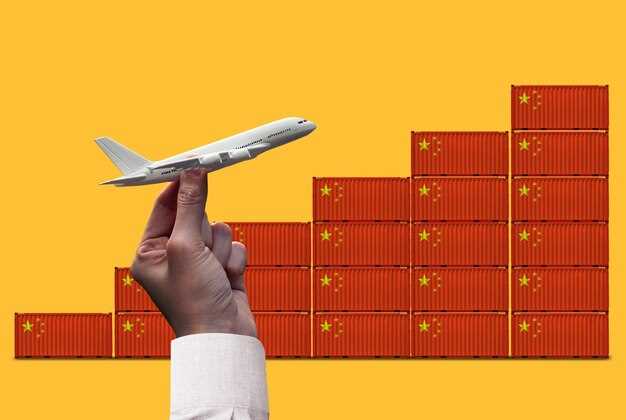Recommendation: lock in a near-term expansion of regional hubs and a scalable as-a-service layer to close delivery gaps and prepare your network for growth across Latin America. DHL allocates €500 million to strengthen supply chains, building well positioned warehouses, optimizing truck size, a refreshed fleet, and a digital backbone that supports real-time visibility from pickup to delivery.
To prepare teams, DHL launches cross-regional trials that connect a kolkata-based operations center with Latin American sites, ensuring lessons taken are shared to improve service with customers and partners in the first wave, and to inform them with actionable insights. This approach creates a clear set of milestones and models for supply and delivery across markets.
Creating scalable sales models hinges on data-driven logistics, with digital dashboards that help retain customers by predicting demand, optimizing routes, and aligning service level commitments with supplier partners.
Delivery accuracy improves as the network adds 12 regional centers and modernizes 1,200 trucks, supported by as-a-service platforms for warehouse management, order orchestration, and fleet tracking, helping them retain customers.
Expansion milestones include 4 new hubs in Brazil and Mexico, 8 smaller cross-dock facilities, and a 30% increase in on-time deliveries, making the network more reliable for customers and helping companies scale their operations across the region.
Takeaway: align your organization around this investment by assigning clear ownership, tracking KPIs, and coordinating them with suppliers so trials translate into sustained growth for customers and partners.
Strategic Focus Areas and Implementation Plan
Recommendation: establish three regional hubs across key Latin American gateways to anchor the €500 million expansion, with a clear roadmap to bring efficiency to cross-border flows and close gaps in last-mile coverage. Select locations will provide full access to ports, airports, and road networks, enabling quick scale as volumes rise.
Focused area 1: Network design and locations optimization. Build a robust model using data sciences to map the network, determine optimal warehouse placements, and balance capacity with demand. Prioritize near major trade corridors and urban centers to cut transit times and improve service levels. The plan includes three primary locations with a fourth micro-warehouse cluster in dense urban zones to ensure minimum dwell times. This approach removes bottlenecks and creates a resilient, scalable backbone. The mumbai-based analytics team (dhls) will support planning and having access to cross-functional inputs, led by agustin to ensure seamless execution and clear accountability.
Focused area 2: Technology, automation, and resilience. Accelerate the adoption of robotics-enabled warehouse operations to double throughput in targeted facilities, while preserving degrees of manual oversight where needed. Implement a unified data spine and robust warehouse management systems to improve inventory accuracy, cycle times, and visibility across locations. Create a framework for continuous improvement, with example pilots in full-scale environments that demonstrate tangible efficiency gains and risk reduction. Prioritize vendor partnerships that offer scalable automation, remote monitoring, and rapid fault recovery to keep operations resilient under demand volatility.
Focused area 3: People, diversity, and leadership. Launch focused talent programs to attract diverse profiles and strengthen local leadership across the region. Establish a training cadence that blends hands-on learning with sciences-backed methodologies, ensuring teams can manage complex cross-border flows and last-mile delivery. Called out responsibilities include rotating assignments, shared service centers in Mumbai, and collaboration with local universities to broaden the talent pipeline. This approach builds cultural agility, empowers their teams, and supports sustainable performance while maintaining minimum compliance with regional standards.
Implementation plan and milestones. Phase 1 (0–90 days): lock in locations, finalize site designs, secure local approvals, and mobilize core vendor partnerships. Phase 2 (90–180 days): begin site preparation, initiate recruitment for key roles, and pilot digital spine deployment in one hub. Phase 3 (180–360 days): commence first fully operational hub, scale automation pilots, and implement end-to-end transport and storage workflows. Phase 4 (12–24 months): expand to all three regional hubs plus micro-warehouses, consolidate data-driven governance, and publish quarterly performance dashboards that illustrate progress against clear targets and costs. This plan keeps teams focused, aligns with strategic priorities, and ensures robust delivery with measurable outcomes.
Target Markets and Country Focus for Expansion
Begin expansion by prioritizing Brasilien und Mexiko in the next 24 months, building a hub-and-spoke network that serves a broad american consumer base and uses dhls’ planned full Automatisierung systems und robots to speed receive and dispatch.
Brazil and Mexico offer the largest scale in LATAM. They together host about 213 million (Brazil) and 126 million (Mexico) people, driving substantial e-commerce growth and steady demand for warehousing, Lkw networks, and value-added services needed to serve well the customers. Current infrastructure supports fast cross-border flows and regional distribution, with Sao Paulo and Mexico City acting as core gateways for pan-regional workloads. These markets behave like anchors for regional growth, attracting investments, talent, and supplier ecosystems, and they are much more than single-country opportunities.
We plan two regional Lagerhäuser per country in the initial phase: 60k–100k sqm in size facilities that support 20–30 trucks per day, with capacity for cross-docking, reverse logistics, and omnichannel fulfillment. These hubs will be supported by enhanced systems und eine model that emphasizes faster receive of shipments, faster put-away, and easier access for clients’ shipments, enabling near-term service improvements for today’s customers.
Beyond Brazil and Mexico, we target Colombia and Chile within 18–30 months, adding medium-size facilities (20k–50k sqm) to extend regional reach into Andean and southern markets. In these countries, we focus on high-diversity product mixes and flexible services–from e-commerce fulfillment to value-added packaging–so they can receive goods quickly and stay competitive against nearby providers.
Peru and Argentina remain planned expansions, driven by domestic development and imports, with an emphasis on services supporting both SMEs and large retailers. todays growth requires a robust, scalable network; by spreading risk across multiple markets, we increase resilience and deliver more reliable service on the globe. dhls will coordinate from mechelen, using a unified systems model and continuous feedback from customers to steer the development program.
New Warehousing Footprint, Capacity Targets, and Hub Expansion
Recommendation: Establish a five-hub LATAM network by mid-2026 with a total warehousing footprint of about 2.4 to 2.6 million square feet, including 900k to 1.0 million square feet dedicated to temperature-controlled pharma storage. This setup supports product demand, maintains service levels, and accelerates growth through flexible capacity that can respond to surge volumes caused by peak seasons. It also matches the size targets for the region, and thus positions DHL for enduring expansion. An addition of a fifth hub adds resilience and geographic balance. Choices taken earlier in mumbai informed the design.
- Footprint and size: five regional hubs spread across key corridors, each sized 420k–520k square feet, totaling approximately 2.2–2.6 million square feet of warehousing and facilities that enable multi-user support.
- Pharma and temperature: designate 1.0 million square feet for pharma-grade, temperature-controlled storage with validated cold chain processes, ensuring compliance with GMP/GDP standards and robust monitoring.
- Locations and rationale: target north Mexico, Brazil (São Paulo), Colombia (Bogotá), Peru (Lima), and Chile (Santiago) to reduce transit times, lower last-mile costs, and strengthen regional hub operations.
- People and programmes: expand women representation in the workforce, backed by state programmes that fund preparation and development to prepare teams for high-frequency picking and value-added services.
- Models and technology: implement cross-dock, bulk-break, and product-split models; integrate scalable WMS/automation, digital temperature monitoring, and real-time supply visibility to support the network.
Lessons from the mumbai facility demonstrate how efficient operations, energy management, and scalable models can cut cycle times and improve service levels; thus, the LATAM expansion gains significant momentum, creating a stronger sector footprint and long-term potential. The plan prioritizes preparation, adding capacity through facilities that can adapt to demand, and maintaining cost discipline while expanding the supply chain footprint.
Digital Transformation Roadmap: WMS, TMS, Automation, and Analytics

Implement a phased WMS and TMS rollout to bring value-added results quickly. This plan is based on a modular model that can scale across america and other regions, including indian operations, with change management embedded to minimize disruption that has taken hold.
Investing in automation and analytics, connected via a common data fabric, significantly boosts throughput and time to value across the supply chain.
Initiatives span WMS optimization, TMS network redesign, automated packing and sortation, and analytics dashboards that surface associated insights for decision makers across time horizons.
america-focused centers and indian operations expand the footprint; acquired assets from local partners feed the plan and investment, helping retain critical talent and build state-of-the-art capabilities that fashion a resilient, easier-to-build operating model.
Close the loop with time-bound reviews and a spotlight on data quality, governance, and the associated initiatives underpinning dhls, america, and indian units.
Measure success with KPIs such as cycle time, inventory accuracy, on-time shipment rate, and total cost per unit; share findings weekly to guide investment decisions and keep the companies aligned.
Multimodal Transport Network Optimization: Cross-Border Lanes and Last-Mile
Recommendation: Implement a phased cross-border lane program across three corridors: Mexico–U.S. (Laredo–Dallas), Brazil–Argentina (São Paulo–Buenos Aires), and Colombia–Panama (Cartagena–Panamá City). Standardize interfaces with customs and data exchanges to enable a single-window clearance at each location. Phase 1 targets 2,000 containers per month per corridor, totaling 6,000 containers monthly, with border dwell times reduced from 48 hours to 12 hours. This expansion will bring speed and reliability to the business, and storage optimization will help handle growing volumes. Organizations across the globe can align on a common data model and data sciences framework, and have a shared set of KPIs to measure size and weight distributions, complementing other modes in the sector. The plan addresses delays caused by manual handoffs and supports receive and onward movement across other locations.
Next, optimize last-mile through autonomous micro-fulfillment hubs in 15 urban locations, with 4 autonomous last-mile vehicles per hub in pilot cities. Each hub serves a 15–20 km radius, delivering to neighborhoods within 30–60 minutes, even during peak periods. The approach decreases last-mile costs by 20–25% and improves on-time arrivals by 8–12 percentage points, while enabling value-added services such as co-packaging, labeling, and next-day delivery guarantees. This structure helps receive shipments from cross-border lanes and distribute them effectively to final customers, including in growing sectors where customers require rapid fulfillment.
To sustain the gains, invest in 6 regional storage hubs that integrate cross-dock capacity, temperature-controlled storage, and digital visibility. Use 40′ and 20′ containers and optimize their size to match demand; apply analytics from data sciences to forecast demand and proactively reposition stock across locations. Align with growing degrees of automation, progressing through low, mid, and high degrees to reduce manual tasks. This change will complement the existing network, serve 24/7 operations in larger markets, and remove barriers in other locations across the sector, bringing value to others. By focusing on the globe, DHL strengthens response to expanding customer expectations and creates value-added services that customers have come to expect.
Sustainability, Risk Management, and Workforce Readiness

Take a regional, evidence‑based framework for Sustainability, Risk Management, and Workforce Readiness to guide the expansion that follows DHL’s €500 million investment in Latin America, which aligns with local strategies that balance growth with resilience. Establish a governance council across state markets, with quarterly reviews and clearly assigned owners for initiatives in transport, warehousing, and people development, so teams receive steady direction that keeps customers and partners aligned. This structure that is tailored to local conditions will help the organization grow its footprint while protecting operations and brand trust.
In sustainability, optimize the fleet mix and warehouse designs to reduce energy use and emissions. Through modal shifts and energy‑efficient equipment, target a 25% reduction in carbon intensity per shipment by 2027 and electrify 60% of first‑ and last‑mile fleets in key LATAM markets by 2030. Install solar on distribution hubs and implement LED upgrades, plus a packaging program directing waste toward recycling streams with a 90% diversion rate by 2026. Use digitalization to monitor performance in real time, receive alerts on anomalies, and drive initiatives that improve the healthcare and fashion sectors’ supply chains without slowing throughput, so the business can grow more efficiently than before.
To manage risks, build a diversified supplier network that combines regional Latin American vendors with strategic partners from India to diversify capabilities and reduce dependence on a single source. Maintain a risk dashboard and a quarterly risk review to address drivers such as weather events, port congestion, and regulatory changes, with contingency plans for each scenario. Ensure contracts receive ESG and safety standards, data‑sharing requirements, and clear performance metrics, so suppliers know what to deliver and how to measure success. Use multi‑route planning and buffer inventories to reduce disruption, and monitor key indicators to minimize the impact that disruptions have on sector performance and customer service.
Invest in workforce readiness with targeted upskilling programs and wellbeing initiatives. Create initiatives to train more than 3,500 frontline workers across LATAM and India‑based partners in digital tools, safety practices, and healthcare workflows, with a goal to reach more than 3,500 people within 18 months. Partner with regional universities and vocational schools to boost diversity and include apprenticeship pathways that convert to full‑time roles, thereby having a durable skills base to support expansion. Tie state and local incentives into contracts with suppliers that include workforce development commitments, ensuring drivers of growth stay connected to the community and the company’s long‑term strategies while reinforcing operating resilience.
| Area | Aktion | Metriken | Eigentümer |
|---|---|---|---|
| Nachhaltigkeit | Fleet optimization, warehouse energy programs, and packaging reform | CO2 per ton‑km; % EV fleet; % waste diversion | Operationen |
| Risk Management | Supplier diversification; risk dashboards; contract standards | Risk index; incident rate; contract compliance | Risk & Compliance |
| Workforce Readiness | Upskilling, diversity programs, local partnerships | Training hours; diversity hires; time‑to‑competence | HR |

 DHL Supply Chain Invests €500 Million in Latin America – Regional Expansion and Logistics Transformation">
DHL Supply Chain Invests €500 Million in Latin America – Regional Expansion and Logistics Transformation">
